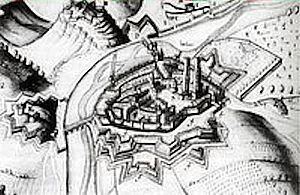Date 1629 | Result Royal victory | |
 | ||
Similar Naval battle of Saint‑Martin‑de‑Ré, Battle of Blavet, Blockade of La Rochelle, Siege of Royan, Siege of Privas | ||
The Siege of Alès was undertaken by Louis XIII of France, and the city captured on 17 June 1629.
Contents
The siege
The Siege of Alès followed the disastrous capitulation of the main Protestant stronghold of La Rochelle, in the Siege of La Rochelle. Huguenot resistance persisted in the south of France though, and Louis XIII endeavoured to eliminate it as well. With Privas and Anduze, the city of Alès was at the center of a string of Protestants strongholds in the Languedoc, stretching from Nîmes and Uzes in the east, to Castres and Montauban in the west. Ales was selected by Antoine Hercule de Budos, Marquis des Portes (1589-1629), as a strategic target to severe Huguenot defenses in two and disconnect their main centers of Nîmes and Montauban.
After Privas on 28 May 1629, in which the Marquis des Portes was killed, Alès surrendered after an intense siege on 17 June. At the end of the siege, Henri, Duke of Rohan, the leader of the Huguenot rebellion, submitted.
Aftermath
The remaining Huguenot cities rapidly fell, and finally Montauban surrendered without resistance. This was one of the last events in the repression of the Huguenot rebellions in France.
The siege was followed by the Peace of Alès (27 September 1629), which settled the revolt by garantying the practice of the Huguenot religion and judicial protection, but requiring Huguenot strongholds as well as political assemblies to be dismantled.
